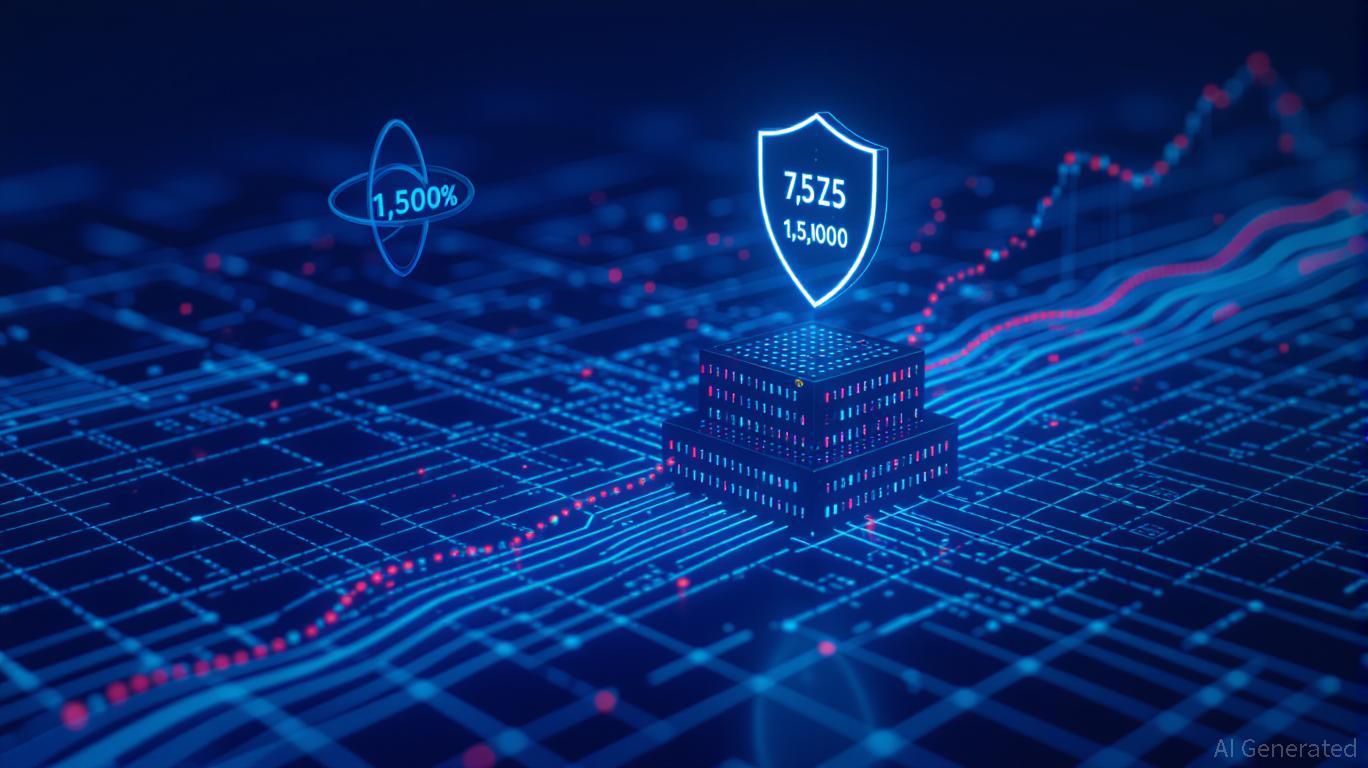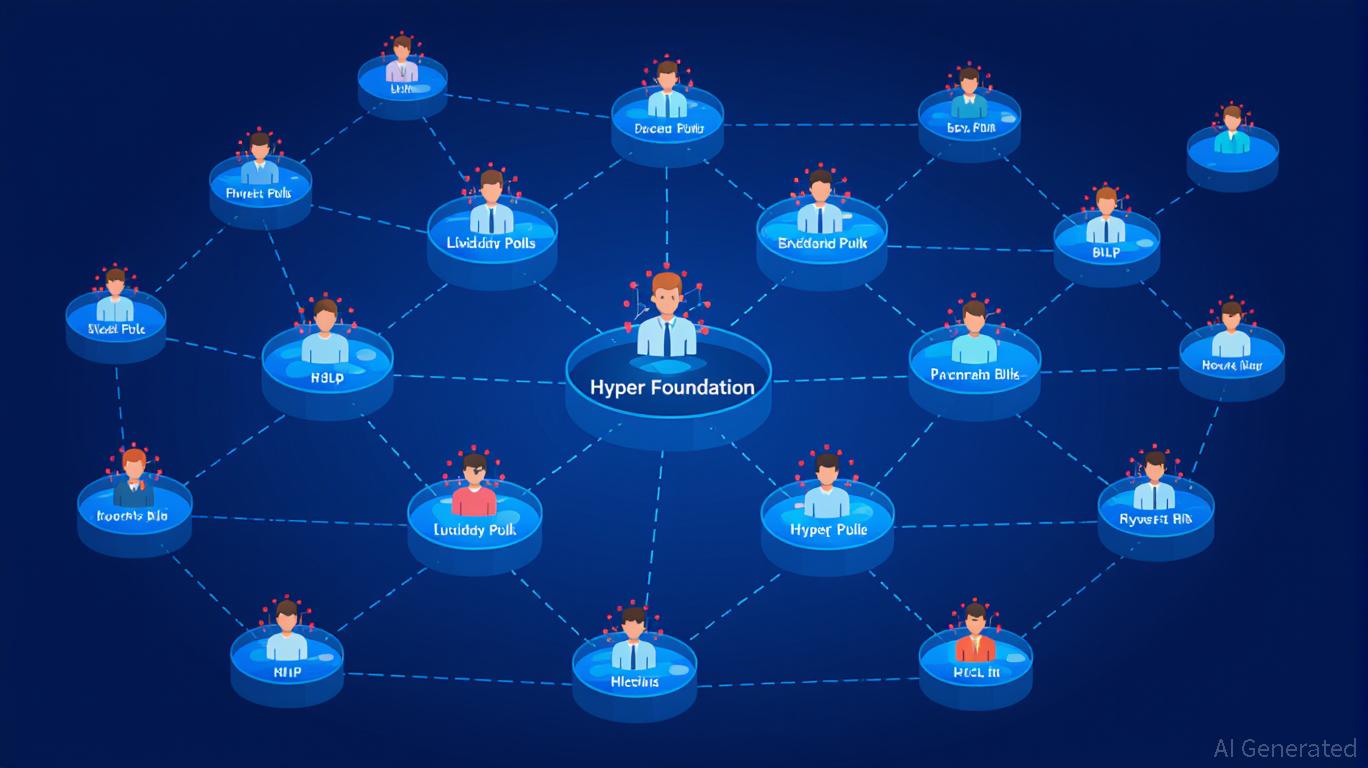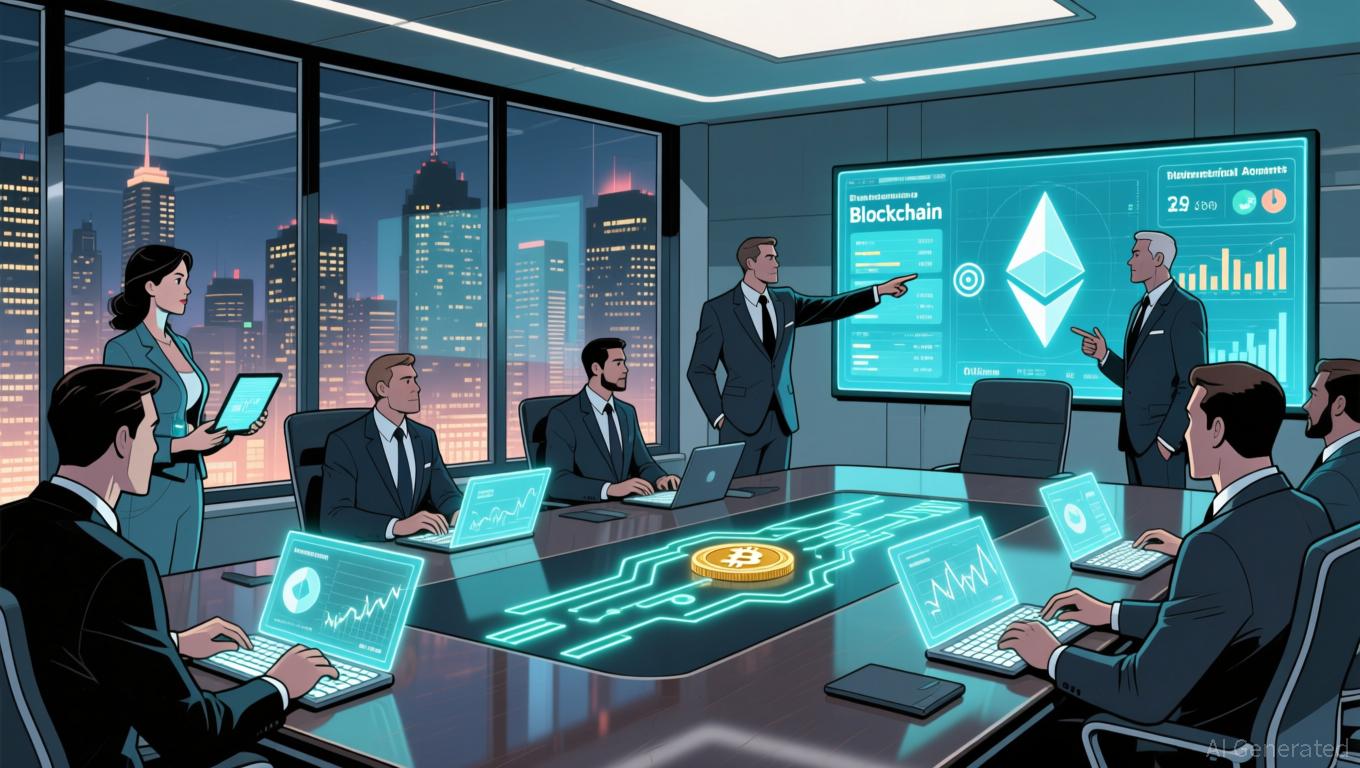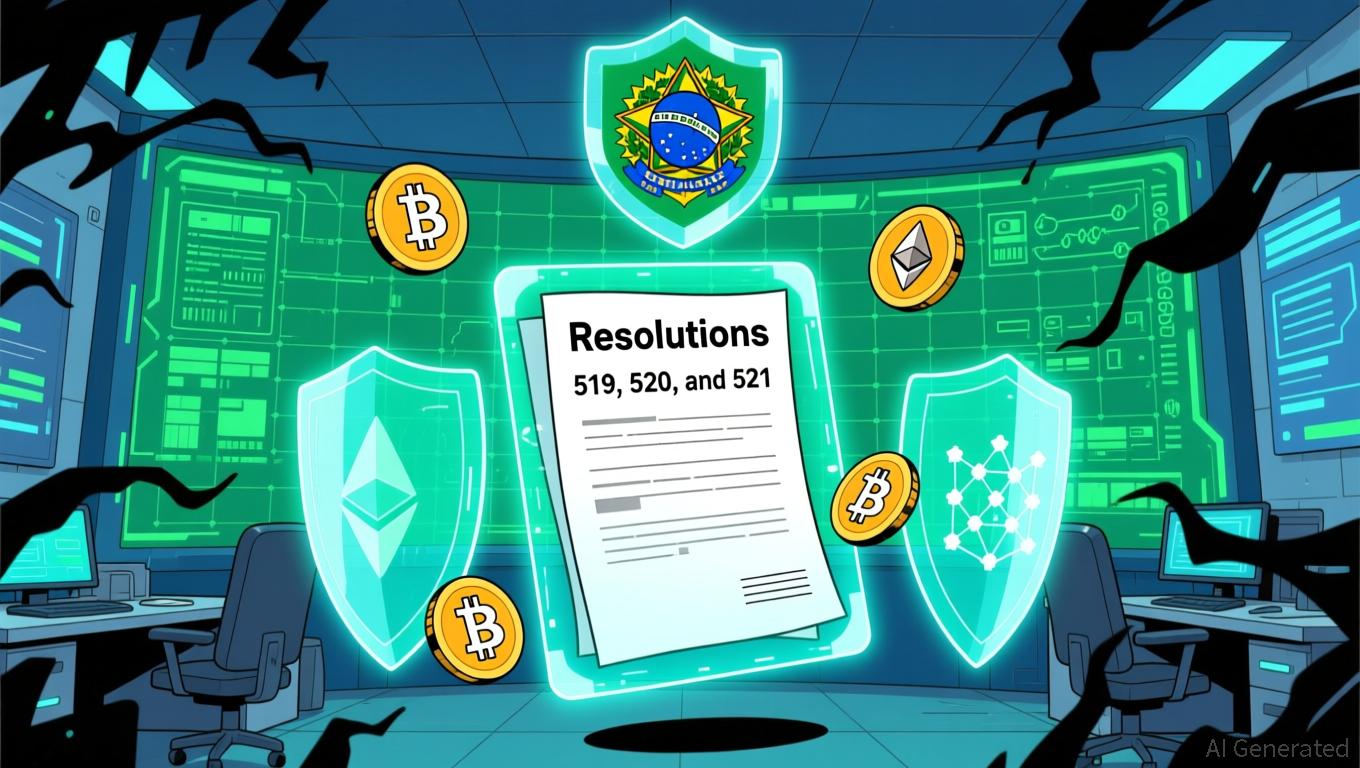Vitalik Buterin's Latest Advances in ZK Technology and Their Impact on the Market
- Vitalik Buterin's GKR protocol reduces ZK verification costs by 10-15x, enabling ZKsync to achieve 15,000 TPS with near-zero fees. - Ethereum's modexp precompile replacement addresses a 50x scalability bottleneck, aligning with its "Lean Ethereum" efficiency goals. - ZK-based platforms like ZKsync (ZKS +150% in 2025) attract Citibank/Deutsche Bank, while Starknet/Immutable expand ZK into DeFi and gaming. - Institutional adoption highlights ZK's viability for enterprise use, though quantum computing risks
A Major Step Forward: The GKR Protocol
The GKR protocol introduced by Vitalik is nothing short of revolutionary. It dramatically reduces verification expenses and hardware needs—by as much as 15 times in theory and 10 times in real-world scenarios. This leap is transforming
This progress isn’t just about speed. Lower computational requirements make ZK-powered networks more energy-efficient and, importantly, better protected against quantum threats, as mentioned in a

Addressing the Modexp Precompile and Ethereum’s Streamlined Vision
Vitalik’s efforts don’t end there. He’s also addressing a less obvious obstacle: the modexp precompile, a legacy component for RSA encryption that now slows ZK-EVM proofs by a factor of 50, according to the Bitget report. By substituting this with standard EVM code,
What does this mean? While some DeFi protocols may experience short-term fluctuations, the long-term outlook for the network is positive. It’s similar to a crucial “software update” for Ethereum’s infrastructure—one that could establish ZK-EVM as the benchmark for enterprise use.
Market Impact: ZKsync’s Growth and Institutional Interest
The results speak for themselves. ZKsync’s native token, ZKS, jumped 150% in November 2025 after the Atlas upgrade, which cut gas fees and drew in major institutions like Citibank and Deutsche Bank, as reported by Bitget. At the same time,
For those investing, the message is clear: ZK-based platforms have moved beyond speculation. They are addressing tangible issues—such as high transaction costs, slow processing, and regulatory challenges—and are attracting both retail and institutional capital.
Balancing Opportunity and Risk in the ZK Sector
However, every breakthrough comes with its own set of risks. Ethereum’s modexp challenge and the need for widespread GKR implementation point to ongoing technical obstacles, as the Bitget report notes. Regulatory concerns over privacy coins like
Still, these issues can be overcome. Investors should prioritize projects with practical applications and strong institutional support. ZKsync, Starknet, and Immutable are prime examples. For those with a higher risk appetite, investing in Ethereum itself—now a core platform for ZK innovation—may be a compelling option.
Final Thoughts: The Dawn of a New Blockchain Investment Era
Vitalik Buterin’s work with ZK technology represents more than just an upgrade—it marks a fundamental shift. As these solutions mature, we’re likely to see a split in the blockchain sector: older networks struggling to keep pace, while ZK-driven platforms lead in scalability and DeFi.
Right now, the takeaway is unmistakable: This is the moment to embrace ZK-based platforms. Whether through tokens like ZKS, Ethereum itself, or DeFi projects built on these foundations, the potential is enormous. But as always, proceed with care. The journey toward quantum-resistant, highly scalable blockchains is ongoing—and the most successful investors will be those who approach it with both foresight and caution.
Disclaimer: The content of this article solely reflects the author's opinion and does not represent the platform in any capacity. This article is not intended to serve as a reference for making investment decisions.
You may also like
Hyperliquid's Growing Influence in Crypto Trading: Can It Maintain Long-Term Investment Appeal?
- Hyperliquid dominates 80% of 2025 perpetual contract market via on-chain governance and user-driven liquidity innovations. - Centralized governance (HIP-3 protocol, USDH stablecoin launch) balances permissionless market creation with validator dominance risks. - HLP liquidity model generates $40M during crashes but faces regulatory scrutiny and token economics challenges from 2025 HYPE unlock. - TVL growth to $5B and 518K active addresses highlight adoption, yet governance centralization and institutiona

Ethereum Latest Updates: JPMorgan and Bitmine Make $1.3B ETH Investment, Showing Institutional Trust Amid Market Fluctuations
- Institutional Ethereum investments surged $1.3B as JPMorgan and Bitmine capitalized on price dips, with Bitmine now holding 3.4M ETH (2.8% of supply). - JPMorgan's $102M Bitmine stake reflects strategic crypto exposure via traditional instruments, aligning with U.S. ETF approvals and regulatory clarity on staking ETPs. - Bitmine's 5% supply target and SharpLink's 6,575 ETH staking highlight growing institutional confidence, despite 27.7% monthly price declines creating buying opportunities. - Regulatory

Bitcoin News Today: Bitcoin Miners Bet on AI: Will Technological Advances Outpace Market Fluctuations?
- Bitcoin miners adopt AI/HPC to offset bear market pressures, leveraging energy infrastructure for GPU workloads. - TeraWulf's $1.85M/MW/year AI hosting benchmark and CleanSpark's Texas campus highlight infrastructure diversification. - Grid constraints and GPU shortages challenge transitions, while Bitcoin ETF outflows ($558M) signal shifting investor sentiment. - Analysts warn of potential $100,000 price correction if $104,000 resistance fails, despite positive on-chain demand signals. - JPMorgan identi

Brazil Sets Sights on Crypto Regulation to Build Confidence and Strengthen Regional Leadership
- Brazil's central bank introduced Latin America's strictest crypto regulations, requiring VASPs to obtain authorization and comply with banking-level oversight by November 2026. - New rules mandate $2M+ capital requirements, classify stablecoin transactions as forex operations, and cap unapproved crypto transfers at $100,000 per transaction. - The framework aims to combat fraud and illicit finance by extending AML protocols to stablecoins, which account for 90% of Brazil's crypto activity, while enhancing
